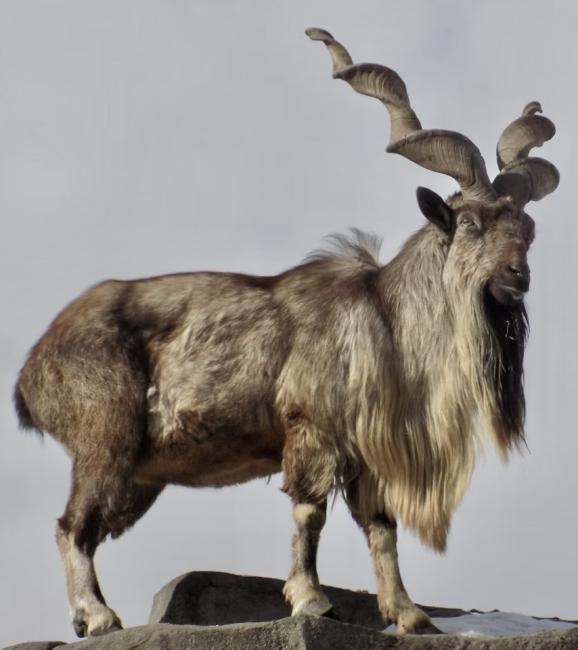
Rough grazing will return to the capital’s upland slopes if plans by an Edinburgh goat breeder get the go-ahead.
Elizabeth Massingberd (85) tends a flock of 12 Baljuvan Mountain Goats at her townhouse on Regent Terrace. She keeps another flock of 250 on family-owned moors above Balerno.
Her proposal is to release the two ‘clans’ across parts of the city centre.
Image: Vincent M.A. Janssen, Pexels.
Historical precedent, future benefits
‘Sheep and goats were an established part of the Edinburgh streetscape for centuries’, says Ms Massingberd. ‘It is wholly anomalous that they have not been seen in the capital since 1977.’
She believes their return would preserve the city’s natural and built-heritage environments.
She says regular grazing would prevent wilderness areas deteriorating into scrub and woodland. The combination of close cropping and the breed's acidic dung would maintain anaerobic soil conditions and occasional displays of bog cotton and dwarf heather.
The goats’ natural territorial instincts would deter dogs from disturbing ground-nesting birds and protect listed structures such as St Anthony’s Chapel and the National Monument of Scotland from gradual erosion by invasive tourists.

Image: Nick Sokolov, Unsplash.
Central Asian origins
Massingberd, Hilda to her friends, grew fond of this particular kind of goat during a 40+ year career as a transhumance consultant attached to British diplomatic missions across Central Asia from 1965 onwards. A confident and imposing figure, she is nonetheless unwilling for her photograph to appear on social media.
‘Over millennia,’ she told the Spurtle, ‘the Baljuvan was bred as an hybrid between native ibex and the Markhor goat of the Sarihosor Jamot in Tajikistan. They were first selected for size to defend Alabay shepherd dogs from attack by wolf and mountain lion.’
The larger individuals in the Massingberd flock now measure over 170 cm at the withers and weigh in excess of 200 kg. Adult rams are distinguished by ‘corkscrew’ horns which can grow to up to 160 cm, collisions permitting.
She says they are athletic and resilient to anything the Scottish climate can throw at them, yet it’s their appetite for life that sets them apart.
‘The Baljuvan is intelligent, curious, wily, sometimes over-affectionate, and quite astonishingly bad-tempered when hungry. But there are very few things it won't eat, and whatever they are I haven't discovered them yet.’
That last observation is important, for Massingberd and her long-time (equally camera-shy) companion Hilaria Knox (72) are appalled by the littered state of Edinburgh’s semi-wild places.
‘Calton Hill and Arthur’s Seat are carpeted in rubbish,’ says Knox. ‘It is disgraceful. But your ravenous Baljuvan will remedy that in a jiffy.
Varied diet
‘Of course, they like green things when they can find them but they also go doolally for chocolate bars, bus passes and balloons, plastic bags, clothing, fireworks, Sloppy Giuseppes, used condoms, chip wrappers, needles, bank cards, bottle caps, tin cans, soft drinks, bike chains, cigarette butts, hare, hair extensions, warm earrings, beanie hats, iPhones, soiled underwear, Dacshunds. Anything whatsoever of that sort … delicious to a healthy goat.’
‘“Omniverous” hardly does them justice’, agrees Massingberd. ‘Salisbury Crags and the Scottish Parliament gardens would be pristine in no time, and the bairns could be deployed to residential areas elsewhere after windy weather or bin-strikes as required.’
The goats’ welfare and upkeep will self-finance, Knox argues. ‘Premium-quality wool could be gathered from gorse bushes or shorn by properly insured marksmen with tranquiliser guns. And the meat – digestible in slow-cooked dishes such as dimlama, iagham, lagman shurpa and sambusa – would certainly interest adventurous diners.’

Image: Alena Maruk, Pexels, adjusted.
Out of the box
‘It is a sound scheme,' Massingberd argues, 'which makes Moaning Minnies from the Scottish Wildlife Trust quibbling over non-native species all the more disappointing. We cannot abide petty-foggers.’
The pair say all that is needed to make their dream a reality is for the powers-that-be to think out of the box.
They predict an expression of interest from Keep Scotland Beautiful any day now and expect a reply soon from King Charles in his capacity as what Knox describes as ‘Laird High-Panjandrum’ of Holyrood Park.
They next seek discussions with local elected members and relevant stakeholders such as Historic Environment Scotland, Edinburgh Council Parks & Greenspaces, and the Scottish Government.
With or without anyone else’s approval, Massingberd will begin a phased test-release of Baljuvan goats into the private gardens shared between Regent, Royal and Carlton Terraces later this month.
The Calton Hill Conservation Trust, Cockburn Association, Collective Gallery and New Town & Broughton Community Council have all not been approached for comment.
UPDATE (16 JUNE 2025): Interesting item on today's Radio 4 PM programme, based on BBC Wales item HERE.
*****





